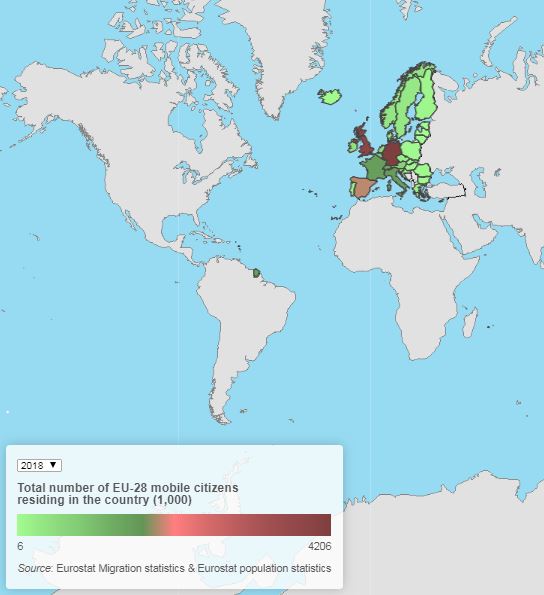According to the European Commission’s 2019 annual report on intra-EU labour mobility, 4.2% of the total working-age population in the bloc is living in a host Member State.
The Commission’s 2019 annual report on intra-EU labour mobility identifies trends in free movement of workers and their family members. The analysis covers the mobility of all working age citizens, the mobility of those who are active (employed and unemployed) as well as indicators of economic integration of mobile citizens, such as employment /unemployment rates and occupations.
The report figures show that there were 17.6 million EU-28 ‘movers’ in 2018, of which 12.9 million persons were of working age (20-64 years). The number of working age movers grew by 3.4% compared to 2017, a slower pace compared to previous years.
The top five sending countries of working age movers relative to the country’s population were Lithuania, Romania, Croatia, Latvia and Estonia. In 2018, around half of all EU movers resided in either Germany or the UK and a further quarter resided in Spain, Italy or France.

Source: European Commission
Mobility spells are getting shorter, according to the report, with 50% of movers staying in the host country for one to four years. Return mobility has also increased: for every four persons who leave a Member State, three return.
The publication of the labour mobility report coincides with the 25th anniversary event of the European Job Mobility Network (EURES) in Brussels. EURES has a network of 1,000 advisers who provide personalised support to both employers and jobseekers. It also comprises the EURES job mobility portal, where jobseekers and employers can upload/access CVs, job opportunities and comprehensive information. There are currently more than 3.3 million job vacancies listed on the portal.
Image: Skitterphoto











Thanks!
Our editors are notified.